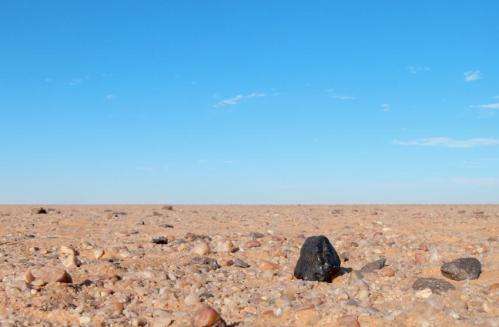Paper spotlights key flaw in widely used radioisotope dating technique

An oversight in a radioisotope dating technique used to date everything from meteorites to geologic samples means that scientists have likely overestimated the age of many samples, according to new research from North Carolina State University.
To conduct radioisotope dating, scientists evaluate the concentration of isotopes in a material. The number of protons in an atom determines which element it is, while the number of neutrons determines which isotope it is. For example, strontium-86 has 38 protons and 48 neutrons, whereas strontium-87 has 38 protons and 49 neutrons. Radioactive elements, such as rubidium-87 (but not strontium-86 or strontium-87), decay over time. By evaluating the concentrations of all of these isotopes in a rock sample, scientists can determine what its original make-up of strontium and rubidium were. Then, by assessing the isotope concentrations of rubidium and strontium, scientists can back-calculate to determine when the rock was formed.
The three isotopes mentioned can be used for dating rock formations and meteorites; the method typically works best on igneous rocks.
But it's not quite that straight-forward. The data from radioisotope analysis tends to be somewhat scattered. So, researchers "normalize" the data by making a ratio with strontium-86, which is stable – meaning it doesn't decay over time.
Dividing the isotope concentrations of all the forms of strontium and rubidium by the isotope concentration of strontium-86 generates something called the "isochron." The isochron is then plugged into a model, which uses it to turn the overall radioisotope data into a clear, linear function. This function is able to tell researchers how old a sample is. Or it's supposed to.
But there's a wrinkle in the process that has been overlooked.
The ratios of strontium-86 to rubidium and strontium-87 are thought to only be influenced by the radioactive decay of the rubidium-87 into strontium-87. The current model of radioisotope dating is based on that idea.
But that model doesn't account for differential mass diffusion – the tendency of different atoms to diffuse though a material at different rates. And atoms of strontium-86 can diffuse more readily than atoms of strontium-87 or rubidium, simply because atoms of strontium-86 are smaller.
"It's a slow process, but not necessarily a negligible one when you're talking about geological time scales," says Robert Hayes, an associate professor of nuclear engineering at NC State and author of a paper describing the work.
"The rate of diffusion will vary, based on the sample – what type of rock it is, the number of cracks and amount of surface area, and so on," Hayes says. "So, there's not a simple equation that can be applied to every circumstance. Researchers will need to evaluate samples individually, then apply the relevant physics accordingly.
"It's a pain in the neck, but it will make our estimates significantly more accurate," Hayes says. "If we don't account for differential mass diffusion, we really have no idea how accurate a radioisotope date actually is. It's worth noting that the issues raised here do not apply to carbon dating, which does not utilize isotopic ratios."
The paper, "Some mathematical and geophysical considerations in radioisotope dating applications," is published in the journal Nuclear Technology.
More information: Robert B. Hayes. Some Mathematical and Geophysical Considerations in Radioisotope Dating Applications, Nuclear Technology (2017). DOI: 10.13182/NT16-98
Provided by North Carolina State University





















